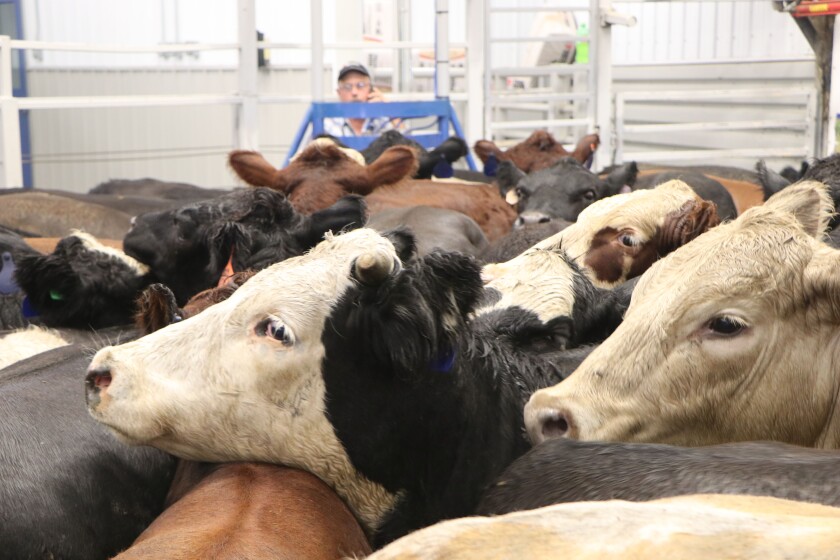Elevate Your Knowledge with Bagley Risk Management
Elevate Your Knowledge with Bagley Risk Management
Blog Article
Recognizing Animals Risk Protection (LRP) Insurance Policy: A Comprehensive Guide
Navigating the realm of livestock threat security (LRP) insurance can be a complicated undertaking for several in the farming market. From just how LRP insurance coverage functions to the various coverage choices offered, there is much to reveal in this comprehensive guide that can potentially form the means animals producers approach threat administration in their organizations.

How LRP Insurance Policy Functions
Occasionally, comprehending the technicians of Livestock Risk Security (LRP) insurance coverage can be complicated, but breaking down how it works can supply clarity for farmers and ranchers. LRP insurance policy is a risk management tool made to secure animals producers versus unanticipated rate decreases. The plan enables producers to establish a protection degree based on their details requirements, picking the variety of head, weight array, and coverage cost. When the plan is in place, if market costs drop below the insurance coverage rate, manufacturers can file an insurance claim for the difference. It is essential to keep in mind that LRP insurance policy is not an income guarantee; instead, it focuses only on price danger defense. The coverage period commonly ranges from 13 to 52 weeks, giving flexibility for manufacturers to pick a period that straightens with their production cycle. By utilizing LRP insurance policy, farmers and ranchers can alleviate the monetary dangers associated with varying market rates, guaranteeing higher security in their procedures.
Qualification and Coverage Options

When it comes to coverage options, LRP insurance coverage supplies manufacturers the versatility to pick the protection level, insurance coverage duration, and endorsements that ideal suit their threat management needs. By recognizing the eligibility standards and insurance coverage choices readily available, livestock manufacturers can make enlightened choices to take care of danger effectively.
Pros and Cons of LRP Insurance
When assessing Animals Threat Defense (LRP) insurance coverage, it is important for animals producers to consider the disadvantages and benefits inherent in this risk management tool.

One of the main benefits of LRP insurance coverage is its ability to provide protection versus a decrease in animals prices. This can aid safeguard producers from economic losses resulting from market changes. Furthermore, LRP insurance coverage provides a degree of adaptability, permitting producers to customize coverage degrees and plan periods to suit their details needs. By securing an assured price for their animals, producers can much better handle danger and strategy for the future.
One restriction of LRP insurance is that it does not secure versus all kinds of threats, such as illness break outs or natural catastrophes. It is critical for manufacturers to meticulously examine their private danger direct exposure and economic circumstance to figure out if LRP insurance policy is the best danger monitoring device for their operation.
Understanding LRP Insurance Premiums

Tips for Making Best Use Of LRP Perks
Making best use of the advantages of Livestock Risk Security (LRP) insurance policy needs critical planning and positive threat monitoring - Bagley Risk Management. To take advantage of your LRP protection, take into consideration the adhering to pointers:
Consistently Assess Market Conditions: Remain informed about market trends and cost changes in the livestock market. By keeping track of these factors, you can make educated decisions about when to acquire LRP protection to protect versus potential losses.
Set Realistic Insurance Coverage Degrees: When picking protection levels, consider your production prices, market price of animals, and possible threats - Bagley Risk Management. Setting realistic protection levels from this source ensures that you are adequately shielded without overpaying for unnecessary insurance
Expand Your Insurance Coverage: Rather of depending only on LRP insurance, think about diversifying your risk monitoring methods. Combining LRP with various other threat administration devices such as futures agreements or options can go to my site offer detailed insurance coverage against market unpredictabilities.
Testimonial and Adjust Insurance Coverage On a regular basis: As market problems transform, occasionally examine your LRP coverage to ensure it straightens with your current danger direct exposure. Changing protection degrees and timing of acquisitions can aid maximize your threat protection technique. By adhering to these suggestions, you can make the most of the advantages of LRP insurance coverage and secure your animals procedure versus unexpected dangers.
Conclusion
Finally, livestock threat security (LRP) insurance policy is a beneficial tool for farmers to handle the monetary risks connected with their animals procedures. By understanding just how LRP functions, eligibility and protection options, along with the pros and disadvantages of this insurance, farmers can make informed decisions to shield their source of incomes. By thoroughly thinking about LRP costs and implementing approaches to optimize benefits, farmers can reduce possible losses and make sure the sustainability of their operations.
Livestock producers interested in acquiring Livestock Threat Protection (LRP) insurance coverage can explore a variety of qualification standards and coverage choices tailored to their details animals procedures.When it comes to coverage options, LRP insurance policy provides producers the versatility to pick the protection level, protection period, and endorsements that best match their risk administration demands.To understand the complexities of Livestock Threat Protection (LRP) insurance policy totally, comprehending the factors influencing LRP insurance premiums is essential. LRP insurance coverage premiums are established by various aspects, consisting of the coverage level chosen, the anticipated cost of animals at the end of this the coverage period, the kind of livestock being insured, and the length of the insurance coverage period.Review and Adjust Coverage Regularly: As market conditions alter, occasionally review your LRP protection to ensure it straightens with your present risk exposure.
Report this page